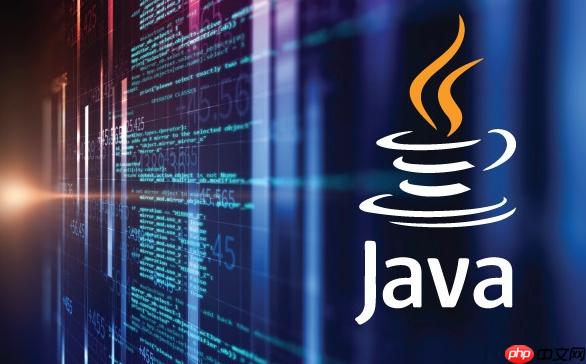Java中处理IO异常主要通过try-catch捕获IOException,或使用try-with-resources自动管理资源关闭,也可通过throws向上抛出异常。

在Java中处理IO异常,主要是通过try-catch语句捕获IOException及其子类。由于IO操作(如文件读写、网络通信)容易出现异常,Java要求必须显式处理这类可检查异常(checked exception)。
最常见的做法是将可能抛出IOException的代码放在try块中,并用catch捕获异常。
try块中执行文件读取、写入等IO操作catch块中处理异常,比如打印错误信息或进行恢复操作示例:
import java.io.FileReader;
import java.io.IOException;
public class ReadFile {
public static void main(String[] args) {
try {
FileReader file = new FileReader("data.txt");
int ch;
while ((ch = file.read()) != -1) {
System.out.print((char) ch);
}
file.close();
} catch (IOException e) {
System.out.println("发生IO异常: " + e.getMessage());
}
}
}
Java 7引入了try-with-resources语法,能自动关闭实现了AutoCloseable接口的资源,避免资源泄漏,同时简化异常处理。
立即学习“Java免费学习笔记(深入)”;
示例:
import java.io.BufferedReader;
import java.io.FileReader;
import java.io.IOException;
public class ReadWithResources {
public static void main(String[] args) {
try (BufferedReader br = new BufferedReader(new FileReader("data.txt"))) {
String line;
while ((line = br.readLine()) != null) {
System.out.println(line);
}
} catch (IOException e) {
System.out.println("读取文件失败: " + e.getMessage());
}
}
}
如果不想在当前方法中处理异常,可以使用throws关键字将异常向上抛出,由调用者处理。
适用于工具方法或高层异常统一处理的场景。
示例:
import java.io.FileReader;
import java.io.IOException;
public class FileReaderUtil {
public static void readFile() throws IOException {
FileReader file = new FileReader("data.txt");
int ch;
while ((ch = file.read()) != -1) {
System.out.print((char) ch);
}
file.close();
}
public static void main(String[] args) {
try {
readFile();
} catch (IOException e) {
System.out.println("IO异常: " + e.getMessage());
}
}
}
基本上就这些。选择哪种方式取决于你的具体需求:需要精细控制就用try-catch,强调资源安全就用try-with-resources,想延迟处理就抛出异常。关键是确保每个可能发生IO异常的地方都被妥善覆盖。
以上就是如何在Java中捕获IO Exception的详细内容,更多请关注php中文网其它相关文章!

每个人都需要一台速度更快、更稳定的 PC。随着时间的推移,垃圾文件、旧注册表数据和不必要的后台进程会占用资源并降低性能。幸运的是,许多工具可以让 Windows 保持平稳运行。

Copyright 2014-2025 https://www.php.cn/ All Rights Reserved | php.cn | 湘ICP备2023035733号